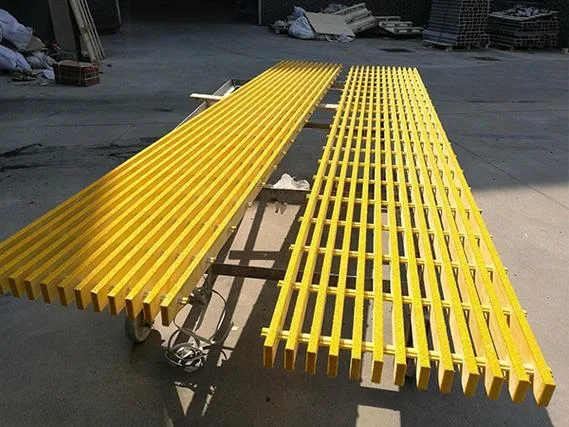Introduction
Pultruded fiberglass grating is prized across multiple industries for its strength, durability, and resistance to corrosion. Whether you’re in construction, marine, chemical processing, or wastewater treatment, finding the right pultruded fiberglass grating suppliers can have a direct impact on the quality, safety, and longevity of your projects. In this article, we’ll explore the five most important factors to keep in mind when selecting a supplier, ensuring that you receive the best value for your investment and the highest performance for your application.

pultruded fiberglass grating suppliers
Factor #1 – Quality & Certifications
When assessing pultruded fiberglass grating suppliers, quality should be your top priority. Grating that doesn’t meet industry standards can compromise the safety and stability of your project.
Testing and Standards
- Look for suppliers whose products comply with recognized standards such as ASTM (American Society for Testing and Materials). These standards validate that the gratings meet certain mechanical strength requirements.
- Ask about load-bearing capacity and how the grating has been tested for impact and stress. Strong data points can reveal whether the product will perform well in demanding conditions.
Industry Accreditations
- A supplier with ISO 9001 certification demonstrates a commitment to quality management, which often indicates a consistent manufacturing process.
- When possible, verify if they have specialized certifications or approvals from regulatory bodies in your industry—such as UL (Underwriters Laboratories) ratings for flame resistance or OSHA compliance for workplace safety standards.
Factor #2 – Product Range & Customization
Different projects have different demands. Whether you need specific load capacities, unique dimensions, or specialized resin types, a broad product range ensures you find exactly what you need.
Sizes, Colors, and Load Capacities
- Pultruded fiberglass grating often comes in various panel sizes and thicknesses. If your project requires extensive coverage, you’ll want large panels; for smaller or more confined spaces, smaller sections might be more appropriate.
- Certain colors might be necessary for safety zoning or aesthetic requirements. Check if your supplier offers color customization and advanced surface finishes like grit top or anti-slip coatings.
- Different environments demand different load capacities. Ensure the supplier can tailor the grating to handle heavy foot traffic, wheeled equipment, or extreme temperatures.
Material Composition
- Pultruded fiberglass grating typically involves a combination of fiberglass rovings and resins (polyester, vinyl ester, or phenolic). Each resin type offers distinct benefits—like superior corrosion resistance or enhanced fire retardancy.
- Ask the supplier to explain the composition of their gratings so you can match the material to your specific application’s environment. For instance, marine or chemical processing projects often require high chemical resistance, which a vinyl ester resin can provide.
Factor #3 – Pricing & Cost-Effectiveness
Budget considerations are crucial, but focusing solely on the lowest price can lead to bigger expenses over time if quality is sacrificed.
Value Over Price
- A competitive price is important, but it should never compromise product reliability. A slightly higher upfront cost might mean fewer replacements, less downtime, and stronger project performance in the long run.
- Compare quotes from multiple pultruded fiberglass grating suppliers, making sure you weigh aspects such as load capacity, resin types, and manufacturing certifications.
Maintenance & Long-Term Costs
- One of the biggest advantages of fiberglass grating is its low maintenance requirements. Quality pultruded grating resists corrosion, reducing the need for frequent replacements or costly repairs.
- Evaluate warranty coverage and after-sales support. Sometimes a slightly higher purchase price includes extended warranty benefits or superior technical assistance—both of which can save money if problems arise in the future.
Factor #4 – Supplier Reliability & Reputation
Trustworthy suppliers consistently deliver quality products on time and stand by their commitments.
Delivery Times & Logistics
- Delays in the supply chain can push back entire project timelines. In industrial or commercial settings, time truly is money. Ask each supplier about their average lead times and shipping logistics.
- For urgent projects, see if they keep popular dimensions in stock or offer expedited shipping.
Customer Reviews & Testimonials
- Seek out online reviews and case studies to see how previous clients rate each supplier’s product quality and customer service.
- Look for patterns in the feedback. If multiple reviewers highlight exceptional durability or timely deliveries, it’s a good sign. Conversely, repetitive issues with product defects or slow responses may signal potential problems.
Factor #5 – Customer Support & After-Sales Service
A supplier’s job isn’t done once the product is delivered. Ongoing support can be invaluable, especially if you’re new to pultruded fiberglass grating or have complex installation needs.
Technical Guidance & Installation
- Quality suppliers often provide guidance on installation best practices, from proper cutting techniques to recommended fasteners. This is especially important for large-scale or specialized projects where mistakes can be costly.
- Check if they have a dedicated technical support line or online resources—such as video tutorials, FAQs, or manuals—that can walk you through installation step by step.
Warranty & Return Policies
- A clear, comprehensive warranty indicates confidence in product quality. Look for warranties that cover both structural integrity and resistance to environmental damage.
- Understand the supplier’s return or replacement policies. If you receive damaged grating or realize you need a different size, a fair and straightforward policy can reduce project downtime and extra costs.
Conclusion
Choosing the right pultruded fiberglass grating suppliers is a critical decision that can impact your project’s safety, longevity, and overall success. By focusing on quality standards, a comprehensive product range, cost-effectiveness, supplier reputation, and strong customer support, you’ll be better equipped to make an informed choice. Carefully evaluate each of these five factors before making a purchase, and you’ll set your project on the path to success.
Ready to learn more or share your own experiences with pultruded fiberglass grating? Let us know your thoughts in the comments, and don’t forget to share this article with anyone who might benefit from these insights!




























